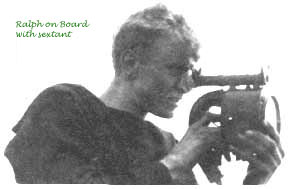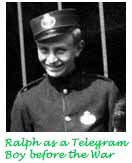

|
|||||
| Ralph Stobart Robson, signalman, life in the British Royal Navy World War Two, sinking of Prince of Wales and the Repulse, Singapore | |||||
|
|||||
|
|||||
|
We were assigned to second class. Finally we set off for a long overnight journey. The people in our compartment were a pleasant bunch, all Indian and most could not speak English. The country was very variable, a bit like running over the Western Plains of America. It was pleasantly green, as there had been a good monsoon. Then the banana leaves were unwrapped. We had been warned not to eat any unwashed fruit or food from natives, but as I had only had one bout of bellyache during my whole tour abroad I felt this did not apply to me. And so it happened. The food was offered, eaten and discussed at length. My Liverpudlian partners were disgusted and amazed. So I ate and laughed and told tall stories. Food could also be purchased at the stations. It could be ordered ahead by telegraph, but this was never tried. Stations came and went, passengers changed and time fled. Presently we settled down and I slept like a babe. We had been told horrendous tales of thuggees who got on a train after dark and murdered all the passengers in a compartment, but this did not disturb my sleep. After travelling nearly 24 hours we found ourselves running into a big city. This was Delhi, our destination. We still had to get to Simla. Delhi was like a hive of disturbed bees. There were cars, trams, lorries, rickshaws; every form of transport. The station platforms were covered with sleeping forms in every corner, sheeted and ghostly. After a shortish wait our next train came in. This train was to take us to Kalka, a terminus at the foot of Terai which was in the foothills of the Himalayas. Here we were confronted with our next means of transport. This was a narrow-gauge mountain railway. Slowly the train struggled through the trees and bushes of the Terai. Higher up it frequently had to reverse and go forwards in a series of steps. As we got higher the view became tremendous but once again, as in Africa, the distant view was clouded. Finally it seemed as if the whole world must be beneath us. We arrived at Simla station. It was a neat little town perched on either side of what was known as the ridge. We were on the south side and could see nothing to the north. We struggled to the top of the ridge and from there the magnificent Himalayas were visible, including Everest. Words could not describe it. Soon we arrived at our destination; the YMCA. Here we were neatly housed for the following days. |
|||||
|
|||||
